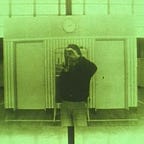Samurai Spy (1965)
Shinoda Masahiro’s cinema will never cease to amaze, this is yet another phenomenal work from the New Wave rebel. Trying to summarize it or drawing comparisons would prove very difficult indeed, as this film crosses multiple genres. This is Metal Gear Solid the Samurai/Shinobi edition. But in cinematic terms, it’s closest to a Jean-Pierre Melville film, with the political intrigue of a Costa-Gavras and the thrill of a film Noire, a bit of Hitchcock, and a dose of 1960s New Wave experimentation that is hidden under layers of a complex plot.
A very challenging film indeed, but rewarding. After you’ve survived the quick historical background intro with many Japanese names, which is very important to understand the film and lays the groundwork for the plot and sets the rules of the universe of the story. Some people complain about the number of names and information dumps but it’s not as difficult as it may seem at first, if you have troubles with the names just take a few notes (using the Japanese name format where the last name comes first helps) and you’ll be fine.
In this regard, it is not more difficult to follow as a Fukasaku Kinji yakuza film. Despite the lack of hand-holding the quick pace of the first third or so slows down and we’re left with the same ensemble of characters. I’ll try and outline the general plot without giving away any important twists.
The film opens with the famous battle of Sekigahara, a battle for domination of Japan between the forces of Toyotomi Hideyori and Tokugawa Iyeyasu, it ends with a Tokugawa victory and Toyotomi flees to Osaka. These two names lay the groundwork for the entire plot, with Tokugawa’s victory the Sengoku period ended, and soon the Tokugawa Shogunate was founded, this story takes place 14 years after that battle where local generals (or local landlords known as “Daimyô”) supporting the defeated Toyotomi plot to bring him back to power. This battle is not fought on a field but in the shadowy world of the ninja (or shinobi no mono), this is where our main character comes in, Sarutobi Sasuke, a spy for the Sanada clan, a supposedly neutral clan but secretly pro Toyotomi. There are three more important characters in this conflict, Takatani Sakon and Koriyama Tatewaki who are pro-Tokugawa, and on the other side Koremura Shigeyuki pro-Toyotomi. There are more characters but understanding these few is the most important.
When we take in all this dense information we’re faced with another layer of depth where the bulk of the film’s material is, that is the moral philosophical layer. Here our character comes forward to the center stage, as we follow him and share his perspective we see all kinds of moral dilemmas. He is an experienced warrior and spy but he is somewhat naïve at the beginning, he only does what his lord asks him to and never questions an order, and he never gives thought to the consequences of his work. As people plot around him and he gets caught in this spiderweb Sarutobi Sasuke starts to learn about his place in the world and this machine of war, the director Shinoda shows us this moral conflict of the individual work and its effect globally. How can a single person affect the outcome of a war? How can a war be prevented or the opposite how can a war be started? Here we must see the man behind this film and his filmography, Shinoda has a retrospective eye, he doesn’t merely look idly at the past, he takes the modern lens in its modern context to gaze and learn from the past but also relates it to the present. The 60s were a wild time in the world and it was no different in Japan, it’s important to give context because herein lies the meaning, this is the time of student protest in Japan, against capitalism but most importantly against war, and so Sarutobi Sasuke most resembles a student or an activist in those times as they are learning about their place in the global struggle.
In the scope of the historical story Sarutobi is lost in a world where he can longer distinguish between friend and foe, a world of espionage, treachery double agents, corruption, and betrayal, death follows him on every corner and on top of that we feel the looming shadow of war always haunting us, and yes it’s “us” not just “him”, our protagonist, because in this film we’re thrown in blind just as he is, caught in this conflict, we just as he didn’t even know the intentions of his lord.
Shinoda’s camera is as precise as ever, his framing on point, and every movement is studied, with this cinematography, mise-en-scène and fighting choreography he manages to create dreamlike sequences with even dreamlike outcomes, he rejects a so-called hyper-realistic approach to the fights giving everything a more abstract value. Also worth mentioning is the use of slow motion in key scenes to elevate the physicality and theatricality of action to a new level while adding to the overall tension.
There are also memorable performances from Kôji Takahashi (Sarutobi Sasuke), and Tetsurô Tamba (Takatani Sakon) both play very charismatic and enigmatic characters and they pull it off in spades.
The music is by none other than the master Toru Takemitsu, there’s not much to say as Takemitsu needs no introduction but it’s nothing short of great.
This is one of Shinoda’s overlooked and misunderstood masterpieces, this is not a regular samurai film, there’s not much action and the focus is on more profound questions of a person’s socio-political existence.
